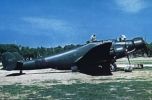
CANT Z 1007642 viewsThe three-engine formula, much developed by Italian manufacturers, had another noteworthy representative in the CANT Z. 1007, the bomber that, together with the SM.79 and BR.20, constituted the Regia Aeronautica's standard equipment during the conflict. A total of 560 aircraft were built in three production series from 1939 to 1943. The Alcione was widely used on all fronts, proving to be an effective aircraft, despite the emergence of problems of structural weakness in extreme climates, such as Africa and Russia, due to its being built entirely of wood. in 10/40, the Z.1007 was largely used in the invasion of Greece, followed by service in the Mediterranean, North Africa and especially against Malta. On the Russian front, the use of the three engine bombers was sporadic and intermittent. At the time of the armistice, the few remaining Z.1007's were split about evenly between the pro-Axis and Co-Belligerent air forces. At its height, the Z.1007 was used by 4 Stormos, 7 Groups and 2 squadrons.
|
|

Arado AR 232A635 viewsThe Luftwaffe's Arado AR 232A combat area transport flew for the first time in the summer of 1941, and was a state-of-art flying machine abounding with technological firsts and innovations.
Performance:
Cruise Speed: 288km/h (180 mph)
Range with max. payload (9,921 lb. (4500kg)): 660 miles (1050km)
Min. field lenth at gross weight: 3,100 ft. (945m)
|
|
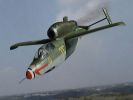
Heinkel He 162620 viewsThe Heinkel He 162 Volksjäger was the second jet engined fighter aircraft to be fielded by the Luftwaffe in WWII. It is know primarily for a series of spectacular disasters during testing. Nevertheless the ambitious production program continued and 300 were complete by the war's end, with another 100 ready for delivery. Only one gruppen had completely re-formed with the He 162 in late April, and they claimed two or three planes in combat before their base was taken over by the British in early May.
|
|
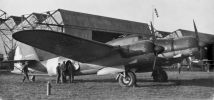
CANT Z.1015617 viewsDevelopment of the Z.1007 with 1500hp Piaggio P.XII RC35
|
|
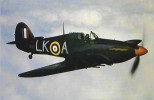
HAWKER HURRICANE Mk IIC613 viewsThis most famous partner to the Spitfire was the predominant fighter in use by the RAF during the Battle of Britain. Designed by Sidney Camm, this aircraft was the first RAF fighter to exceed 300mph & the first eight gun monoplane to enter service. This aircraft saw service throughout the war & was the mount of many great pilots of the War years. It is an interesting & judicious point to note that there were 1,326 Hurricanes & 967 Spitfires on strength during the Battle of Britain, a fine testimony to this fine aeroplane, This particular aircraft was flown by Sqn. Ldr. D. G. Smallwood.
|
|
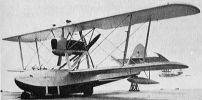
Savoia-Marchetti S.62608 viewsBiplane flying boat. The S.62 was not accepted by the Italian armed forces, but some were built for civilian operators and 24 for the USSR. 29 more were built in the USSR.
|
|
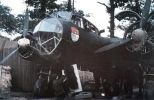
Dornier 17607 viewsThe Dornier 17, were the mainstay of the German bombers during the Blitz on Britain and especially London. Dornier 17 had been an easy target for the Spitfires and Hurricanes of Fighter Command but had proved itself to be a valuable part of the Luftwaffe in campaigns that led up to this battle. The Luftwaffe valued the plane as was shown by production levels for the plane at the start of the war. 1,700 Dornier 17's were built between 1939 and 1940. It made its mark in the attack on Poland in September 1939 and its versatility was such that it was used as a bomber, reconnaissance plane and as a pathfinder by the Luftwaffe. Its limitations were shown in the Battle of Britain, however, when it became clear that the plane was very vulnerable to attacks from the rear and from below and that its defensive armaments were poor. As with other German bombers, against a poor air force, the Dornier 17 did well and the Luftwaffe clearly was over-confident as to its capabilities.
|
|

Savoia-Marchetti S.73600 viewsThree-engined transport aircraft, a low-wing airplane with fixed landing gear. Its lines would become typical for the Savoia- Marchetti designs. Some were used by the Italian airforce, including four which -- having originally been sold to Belgium -- had served with the RAF before they were captured in North Africa!
|
|
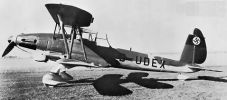
arado ar81597 viewsThe chief rival to the legendary Ju 87, the V3 was superior in most respects but the Ju 87 was chosen primarily due to the fact that the Ju 87 was a monoplane.
|
|
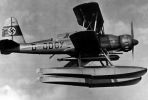
Arado Ar 95589 viewsSix examples of the Ar 95A-0 were built for the Legion Kondor in Marjorca with half of these airframes later being transferred to Nationalist Spain. An additional six were built to fulfill an export order with Chile, half the airframes had floats while the remainder had fixed gear. The final production run comprissed roughly a dozen examples being built for the Luftwaffe and assigned to 3/SAGr 125 in the Baltic and south Finland after the invasion of Russia.
|
|
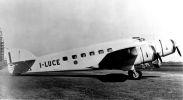
Savoia-Marchetti S.M.83588 viewsThis version was a civil transport version in a 10-passenger configuration. it was powered by 3 × Alfa Romeo 126 RC.34 radial, rated at 750 hp (559 kW)
Number built: unknown out of 23 S.M.83
|
|

Avro 685 York583 viewsA transport development of the Lancaster, with a bigger fuselage of rectangular cross-section and an additional tailfin. Production during WWII was limited because it was agreed that the US would supply transport aircraft.
|
|
|
|